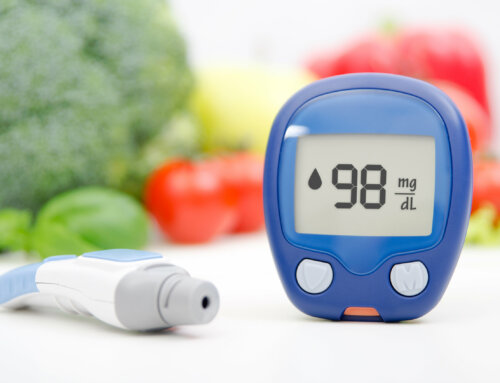We’ve all heard the terms “good carbs” and “bad carbs” used by doctors, nutritionists, fitness experts, and dieters. While some people have begun limiting their overall consumption of carbohydrates (whether “good” or “bad”), others have concentrated on choosing more of the “good” carbs and avoiding the “bad” ones. Is all of this buzz much ado about nothing—just the latest diet craze? And if not, what does it mean for diabetics?
What are “good” carbs?
Good carbs are found in foods like fruits, vegetables, and whole grains. These foods take longer for the digestive system to break down, so glucose is released to the bloodstream at a steady rate. In response, an even and prolonged release of insulin to the bloodstream occurs. The blood sugar rises and falls gradually, providing a more constant and smooth source of energy for the body. Foods such as these are rated low on the glycemic index, a system that assigns a number value to food based on how quickly it enters the bloodstream as glucose.
What are “bad” carbs?
Bad carbs are found in foods such as white bread, sugary sodas, pasta, and potatoes. These foods are easily broken down by the body, providing speedy access to energy. An influx of glucose is released to the bloodstream, causing a sharp spike in blood sugar. Higher quantities of insulin are released (or needed via medication) to counteract this surge and achieve normal blood sugar levels. This excess of glucose can be burned up very quickly, causing a crash immediately after. Bad carbs are rated high on the glycemic index, and many people believe that diabetics especially should limit their consumption of such foods.
News about carbohydrates
Researchers are now making connections between the so-called bad carbs and a number of health problems such as eye disease and even acne. In one study, elderly people following a low glycemic index diet had less age-related macular degeneration than expected. Macular degeneration is a disease that causes deterioration of the eye, and is the leading cause of blindness in the United States today for people fifty years old and up.[1] The study, published in the American Journal of Clinical Nutrition, cites a low glycemic diet as one of the most cost-effective methods of preventing this condition.[2]
So what does it all mean for diabetics?
As a diabetic, it may be a wise course of action to examine your dietary habits and choose foods that rate lower on the glycemic index, including good carbs. Adding fruits, vegetables, and whole grains will help to regulate your blood sugar levels and may prevent a host of health problems later in life. Ask your doctor or nutritionist about how to implement healthy diet changes as a part of your ongoing diabetes management routine. Keep in mind that changes in diet will require you to monitor your blood glucose levels more carefully than usual until you understand how your body reacts to these new food combinations.
[1] http://en.wikipedia.org/wiki/Macular_degeneration
[2] Chiu C-J, Hubbard LD, Armstrong J, et al.
Dietary glycemic index and carbohydrate intake in relation to early age-related macular degeneration.
Am J Clin Nutr 2006;83:880–6.






Leave A Comment